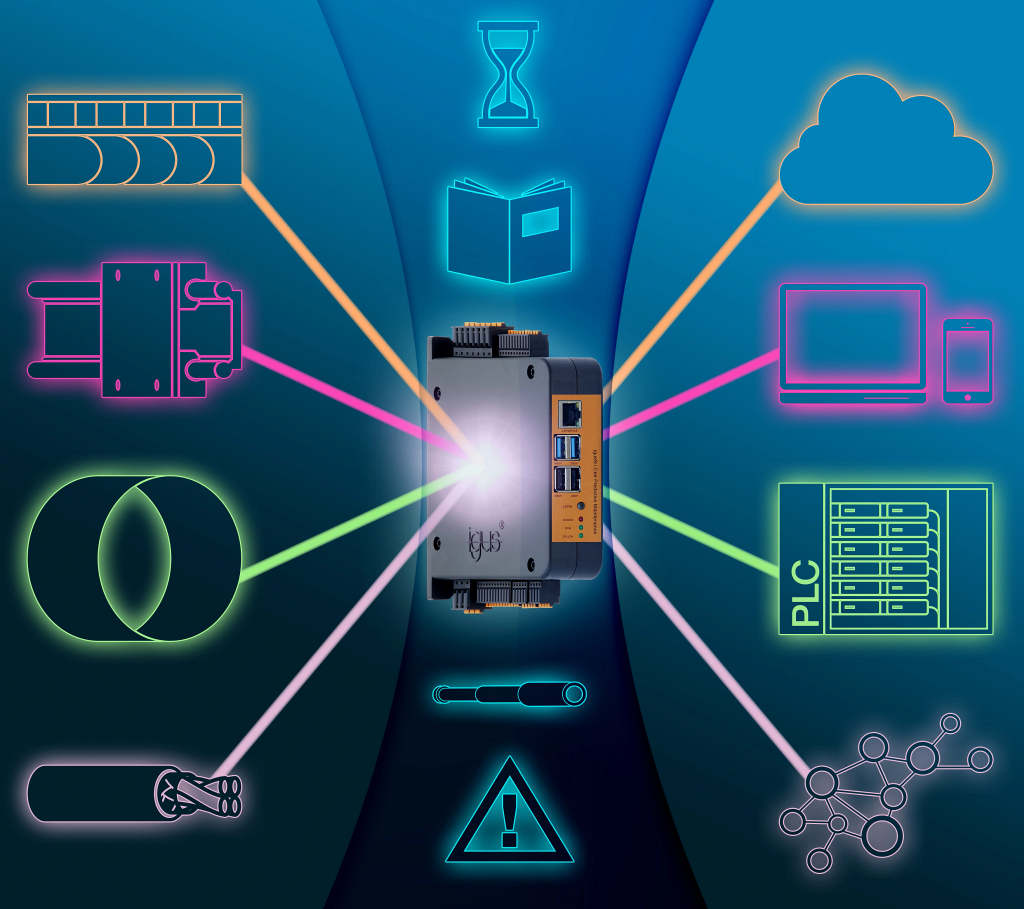How gantry solutions for automation are becoming even more reliable with targeted deployment of Industry 4.0 technology
Richard Habering | 10. June 2021
Energy chains in gantry systems ensure that moving power and data cables and pneumatic lines are protected and reliably guided. For long travels like those typical of many automatic gantries, these chain movements cannot always be precisely defined, and bulges or oscillation results. This may cause the energy chain to tilt, which in the long term will cause damage. In the worst case, it will cause the chain to break, resulting in system downtime. To counteract this problem, several technology companies such as FIBRO LÄPPLE TECHNOLOGY GmbH are working with igus on the optimum integration of various sensor systems into modular gantry solutions for automation. This will greatly decrease the risk of unplanned downtime.
Depending on preferences and maintenance concepts, suitable sensors can be integrated to continuously monitor the e-chain’s condition or even allow predictive maintenance. This can involve a cloud connection, but does not have to. All functions can be purely offline solutions on a local system.

i.Sense sensors for continuous condition monitoring
During continuous condition monitoring, sensors detect various parameters, such as forces or length differences, in real time. Comparing measured values to previously established reference values allows systems to be stopped in the case of deviations before major damage results. Depending on the gantry solution configuration, sensors for monitoring push-pull forces, breakage, or cable tensile force provide the measured values needed for implementing energy chain condition monitoring.
In push/pull force monitoring, the force sensor mounted on the e-chain’s moving end detects unusual force increases that could be caused by items such as foreign bodies. Break monitoring is performed with a cable fed through the e-chain. The cable detects any change in length, transmitting it to a sensor module mounted on the e-chain’s moving end. In cable tensile monitoring, forces are measured directly at the strain relief points on the e-chain’s fixed end, which allows damage to the cables themselves to be detected. All these sensors can now be combined in a single module, saving space and reducing costs.
Trend-setting gantry solutions with predictive maintenance
The next step towards intelligent production will be taken with predictive maintenance. This costs you less than routine or time-dependent preventive maintenance, since tasks are performed only when they are actually necessary. In the case of an energy chain, this means that service life is calculated and continuously adjusted based on the actual load. To map the actual load, sensors attached to the e-chain create movement and load profiles and compare them with the data collected in the igus laboratory, the largest in the industry.
Various sensor solutions are available for creating these movement and load profiles, also depending on the specific application. An abrasion sensor can detect abrasion on the side parts of a gliding e-chain, for example. The sensor module is integrated into a crossbar and equipped with four measuring loops whose wear is a good proxy for service life. For unsupported e-chains, clearance between a chain link’s pin and hole is a clear indication of decrease in an e-chain’s remaining service life. That is why a measuring system can be attached to two separators to measure the clearance between pin and bore connection.
The raw sensor data, information such as remaining service life, overall system condition and component condition is shown graphically on the dashboard. Access to the browser is by web browser (internet or local network). All raw sensor data can, of course, be made available for your individual Industry 4.0 systems and analysis tools. Together with other IoT solutions such as skate wheel, brake and gearbox monitoring, the intelligent energy chain shows that you support jointly developed gantry solutions for automation and are ready for the future of Industry 4.0.

